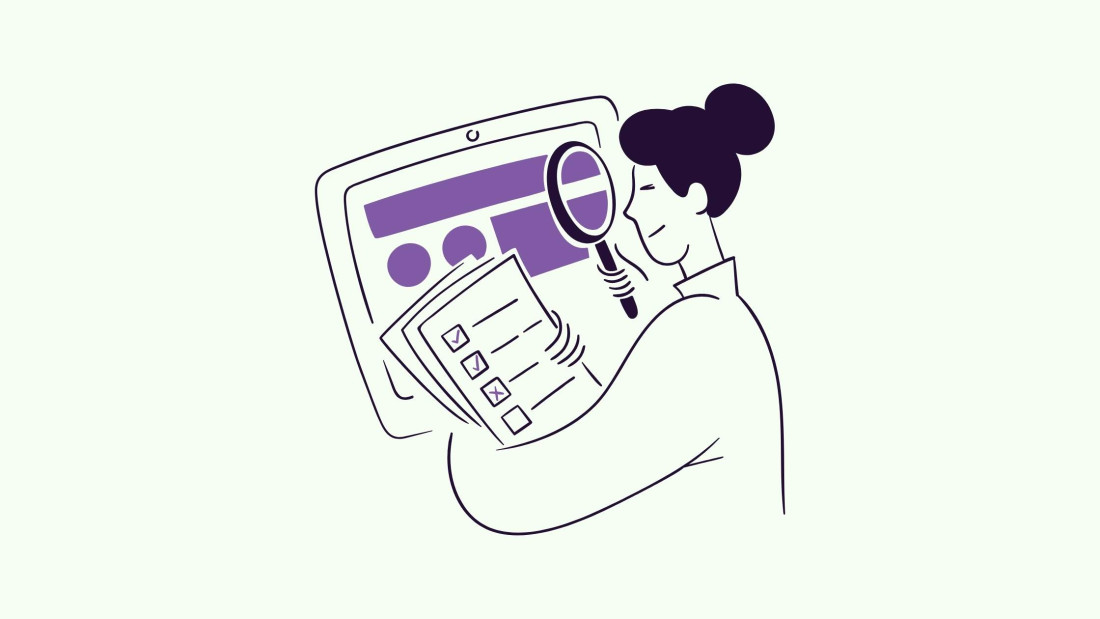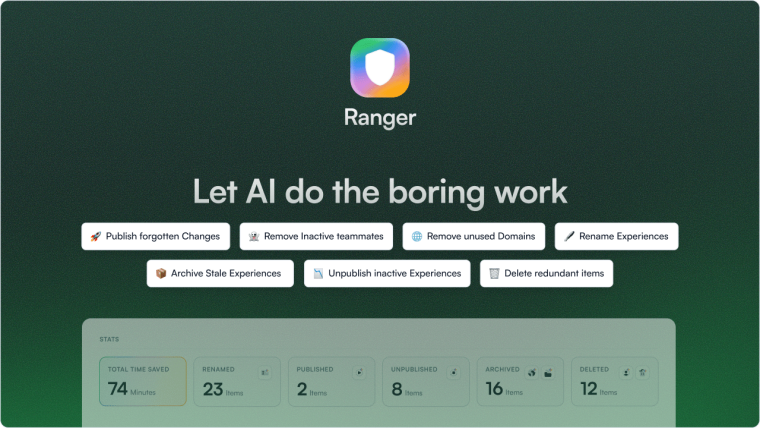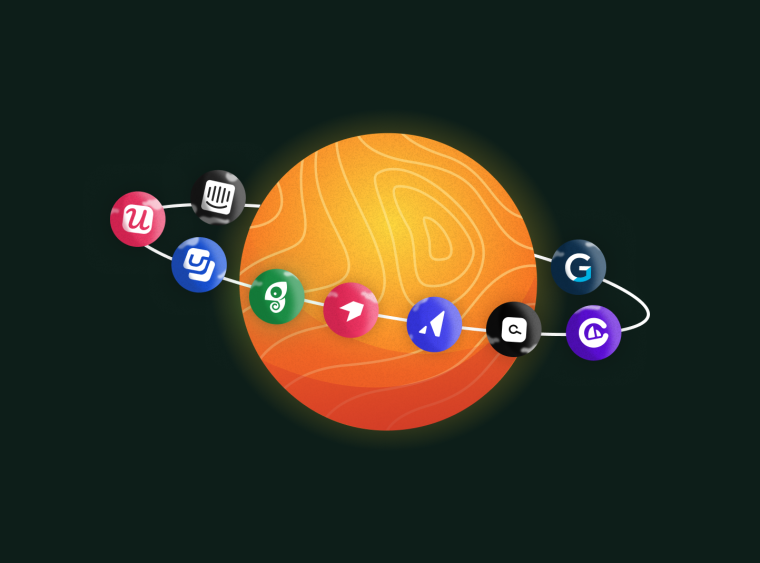The customer engagement score is a key metric you should be measuring at your SaaS organization. Why? Because no matter how great your product is, it doesn’t mean much if nobody is using it.
This score helps you identify opportunities to further engage users. After all, engaged customers are more likely to stick around.
Let’s take a deep dive into what the customer engagement score is, how to calculate it, and how to use it to increase product adoption and customer retention.
Each customer will have their own engagement score, determined by a number of different engagement metrics specific to your product.
Once you decide which engagement events you will monitor, you can use the engagement score formula to understand where each of your customers stands (look for the details below 👇)
You can then group your customers into engagement-based segments to further personalize your product experience for each.
The key use cases for measuring the engagement score are to identify trial users ready to purchase, customers at risk of churning, and upselling opportunities.
Already have your customer engagement data, but you're not sure how to use it? Jump straight to nine proven tactics you can start implementing today to increase engagement among different segments.
What is a customer engagement score?
A customer engagement score does exactly what it says on the tin: it measures how engaged your users are—both paying customers and free trial users. This is an important distinction when considering SaaS businesses that often use a freemium approach to pricing—your engagement score applies to all users.
Each customer has their own score. This is determined by evaluating and scoring a number of different engagement metrics. These metrics include some generic considerations—like time spent in the product—and some product-specific engagement metrics decided by your team.
So, the engagement score looks at activity and usage using engagement indicators of your choice. Choosing these indicators isn’t arbitrary—they’re unique to your SaaS business.
How to calculate your customer engagement score
There are lots of ways you can measure customer engagement—it’s ultimately down to you to pick the inputs you consider to be user engagement events.
These engagement events could look something like this:
How frequently do your users access your software
The features they engage with while using your product
Specific actions they take within your app, such as completing onboarding tours
Renewals and upgrades
Integrations with other tools
Connecting social media accounts
Once you’ve decided on your engagement events—your inputs—the next step is to give them each a value. This can be from 1-10, 1-100, or even 1-1,000 if you so desire. It doesn’t matter as long as you evaluate them all on the same scale.
The weight you give each engagement event also depends on how important you consider them as engagement metrics. Is onboarding tour completion more important than the number of times users access your product? How do 12 months of consistent renewals compare to an upgrade from a new client?
Only you and your team can accurately weigh the importance of events for engagement—the actions of an engaged user vary from product to product.
Ask your team: “What signals that a user is engaging with our product?” This will help you categorize engagement events from least to most important on the scale of your choice.
Once you’ve got your engagement actions and their ratings, you can use this formula to calculate your customer engagement score, where w is the weight given to a random event and n is the number of times the event occurred.

This gives you a more comprehensive view of customer engagement over a set period. Otherwise, you can measure customer engagement at any given time with in-app Microsurveys, asking your users for direct feedback.
You can use Microsurveys to collect relevant, contextual feedback from your users at the moment of their interaction with your product. This will give you a snapshot of your customer engagement, whereas the above formula enables you to view engagement on a bigger scale.

Do users love your product?
Deploy a feedback survey in minutes and find out!
Why it’s important to measure the engagement score
Now, you might be thinking: ‘This all seems quite complex.’
You’re right, getting your customer engagement score is one of the trickier tasks associated with developing a SaaS product. The main benefit of measuring your engagement score is that it creates engagement-informed user segments.
Similar to the way a Net Promoter Score identifies your Promoters, Passives, and Detractors—a customer engagement score helps you identify key segments of your users. This can be especially valuable for Customer Success teams, but also for PMs, PMMs, UX experts, and everyone else in your organization.
Here are a few main use cases for the customer engagement score.
Use it to identify trials ready to purchase
By tracking the engagement of your free trial users, you can more easily identify which accounts are ready to transition to paid accounts. These profiles likely use your product frequently and engage with many of the features available to them on the unpaid version of your product.
Identifying these users enables you to move them through the sales funnel with the knowledge they love your product. It gives you a more informed idea of who is ready to take the leap—consider it an engagement-qualified lead.
🦎 Tip: Your customer engagement score can also help identify freemium users that aren’t engaging with your product. This can help you focus on what’s not working, and resolve issues stopping users from converting to a paid plan.
Use it to identify potential churn
Just as you can identify free trials that are ready to purchase, you can also identify users that are looking likely to churn. These users won’t be engaging with your product, meaning it could be axed following their next tool audit.
You can re-engage these users by reaching out to identify pain points and provide further onboarding options to help push them towards their ”aha!” moment.
Use it to identify upselling opportunities
Finally, you can use the engagement score to identify paying customers that are ready to upgrade their plan. These users frequently engage with the features on offer and could be open to more features at a higher price point.
What is a good engagement score for SaaS products?
Once you’ve got your engagement score results, you’re in a better position to group users into specific segments. You can then approach these segments differently depending on their associated engagement scores.
Engagement-based segments typically look like this:
0 and below = a churn risk
1 - 40 = very disengaged
41 - 70 = somewhat engaged
71 - 100 = highly engaged
100+ = power users
A good engagement rate is anything above 70. Typically, these users are engaged and satisfied with your product.
9 tactics to increase customer engagement in your segments
With your user segments and different scores at hand, your next step is to know what to do with them. Each segment requires different attention and strategies to increase engagement.
However, there’s one engagement tactic that’s a good idea no matter your engagement rate—reaching out and asking.
Ask your users:
How can we better meet your needs?
What’s currently lacking from your product experience?
Is there any aspect of the product you’re unsure about?
Are you confident with the product and how it works?
The exact questions you ask depend on your product and the engagement segment each user belongs to. Making contact with your customers is key to building strong customer relationships.
Now, let’s look at how you should approach each segment with different tactics.
3 engagement tactics for disengaged users
These are users in the 0 and below and 1 - 40 segments. Engaging these customers is absolutely key—or you likely won’t be calling them customers much longer.
Disengaged users are most at risk of churn—a SaaS company’s worst nightmare. So, how can you re-engage disengaged customers? Take a look at these engagement tactics.
1. Collect product feedback
Feedback is a key part of improving anything. How do you expect to better serve customers if you don’t know what they want?
Collecting product feedback from disengaged customers can help identify pain points. One way of doing this is by reaching out to customers directly—but we’ll focus on how to collect specific, in-app feedback.
In-app feedback enables your customers to give their opinions on an action or process directly after interacting with it. It’s how you get the freshest, most precise feedback from your customers on the features they use.
For example, try including Microsurveys within your product. These are short, to-the-point surveys that collect feedback from customers on specific events. And you can easily create them with Chameleon 😉

Once you’ve collected feedback, however, the most important step is taking action. Show your disengaged users that you both listen to their feedback and care enough to act on it.
2. Use in-product gamification
Another way you can look to engage disengaged customers is through gamification. Gamifying the user experience involves interactive elements such as badges, levels, leaderboards, and more. This is something that Duolingo does quite effectively.

Put simply, gamification incorporates gameplay elements in non-gameplay settings to encourage enjoyment and engagement. Gamification taps into a user’s intrinsic attraction to awards and competition. It’s using human psychology and customer behavior to engage users—neat, huh?
3. Offer educational content
Educational content is a great way of capturing the attention of your disengaged users—plus, it doesn’t need to be boring. Educational content can be articles, infographics, videos, workshops, and more—anything that helps your users overcome the product adoption curve.
Your educational content should teach users about your industry, as well as inform them on how your product can help them do their jobs. Disengaged users may have signed up for a number of different solutions in your niche—your content could be the key factor in their decision to commit to just one.
3 engagement tactics for moderately engaged users
These are your user segments scoring between 41 and 70 in the customer engagement score. They’re ‘somewhat engaged’—not dissatisfied but also not singing your praises. Here are three ways you can engage these users.
1. Highlight unused features
Sometimes it’s not that users aren’t impressed with your product—it’s that they don’t know how to access its full potential. Providing in-product guidance helps uncover features that users either didn’t know existed or never learned how to use.
Launchers and Tooltips are both great ways of doing this. Launchers are in-product widgets that you can use to offer additional resources when your users need them the most. Tooltips can help you unblock users by providing key information where customers typically encounter issues—and here’s an example of a Tooltip that you could build with Chameleon.

Whether used together or individually—both of these in-product engagement solutions are key for pushing users from ‘somewhat engaged’ to ‘very engaged’. This is often happening throughout user onboarding, so creating an ongoing onboarding flow will help you increase product adoption and improve retention among new users and existing customers.
2. Jump on a call
A one-on-one chat is great for two reasons:
It builds rapport with customers
It enables you to get extensive feedback
Everyone wants to feel special—and your customers are no different. Reaching out to find a time to chat shows them that you’re invested in their success, and also gives you the chance to double down on how your product plays a part in that success.
It’s also a great way of getting direct feedback. Customers are more likely to expand and uncover deeper insights during an informal chat—insights that could lead to essential product improvements.
3. Build a community
Fostering a community is another great tactic for increasing your customer engagement. Communities—when done right—are a great resource for your customers and the perfect place for your users to share their experience with your product.
3 engagement tactics for highly engaged users
Surely there’s no need to further engage your most engaged customers, right? Wrong. You always want to be engaging your active users, otherwise, you risk them losing interest in your brand.
The way you engage this segment differs from how you engage other segments.
Take a look at the effective tactics you can use.
1. Offer premium trials
If your most engaged free trial users have yet to upgrade to a paid plan, encourage them with a free trial. They love your product—as highlighted by the engagement score—so give them the chance to experience its full ability at no extra cost.
Here’s an example of how Spotify does it.

This shows them they’re appreciated and makes them more likely to upgrade to a paid plan—especially when combined with our next tactic.
2. Remove upgrade friction
Make it easy for engaged users to upgrade.
It seems simple because it is—remove the barriers to upgrading and upselling and cross-selling become easier.
One way you can do this is with well-placed launchers. Instead of using launchers to highlight unused features, you can also use them to highlight premium features. These are features only available with a paid plan.
Include a link to upgrade in your launcher to ensure the process is frictionless.
3. Run exclusive surveys
Our final tactic for further increasing engagement amongst your engaged users is to include them in exclusive surveys and workshops. Your engaged users are invested in the development of your product—it’s them that directly benefit from any improvements, after all.
Get users involved with product development by talking with them about what they’d like to see from your product. You can even hold workshops to collaborate on the future of the product—anything that gets them involved.
Of course, this doesn’t mean handing over the reins. You’re simply giving users exclusive access to the development process and enabling them to feel part of the bigger picture.
Engaging users is an ongoing effort
Ensuring users are engaged is a key part of your product’s success—and it’s an ongoing effort. It’s worth it, however, both for customer satisfaction and customer loyalty.
Keeping customers engaged can be tricky, but it’s a lot easier with the right tools. As we mentioned above, you can use Chameleon to create a variety of custom in-app messages and different in-product experiences to reach customers at key events in their user journey and keep them engaged.
Get started for free to access the Chameleon Playground and start building an engagement strategy to help communicate the full potential of your product.
Empower your team to drive customer success with Chameleon
Keep your customers engaged throughout their lifecycle with a suite of products for user onboarding, feature adoption, and continuous user feedback.







